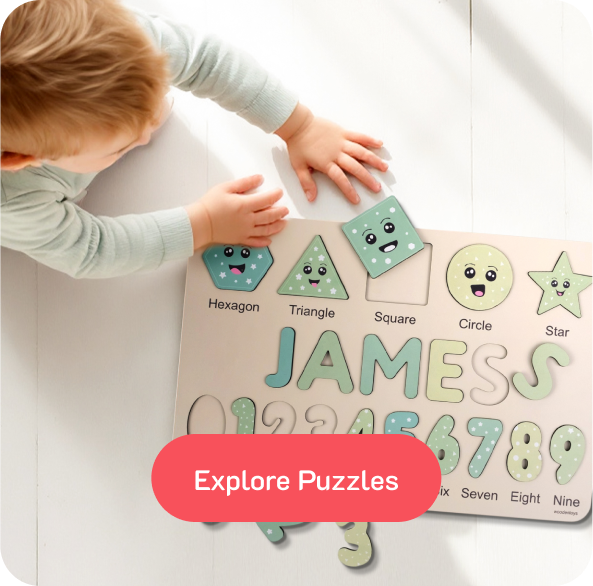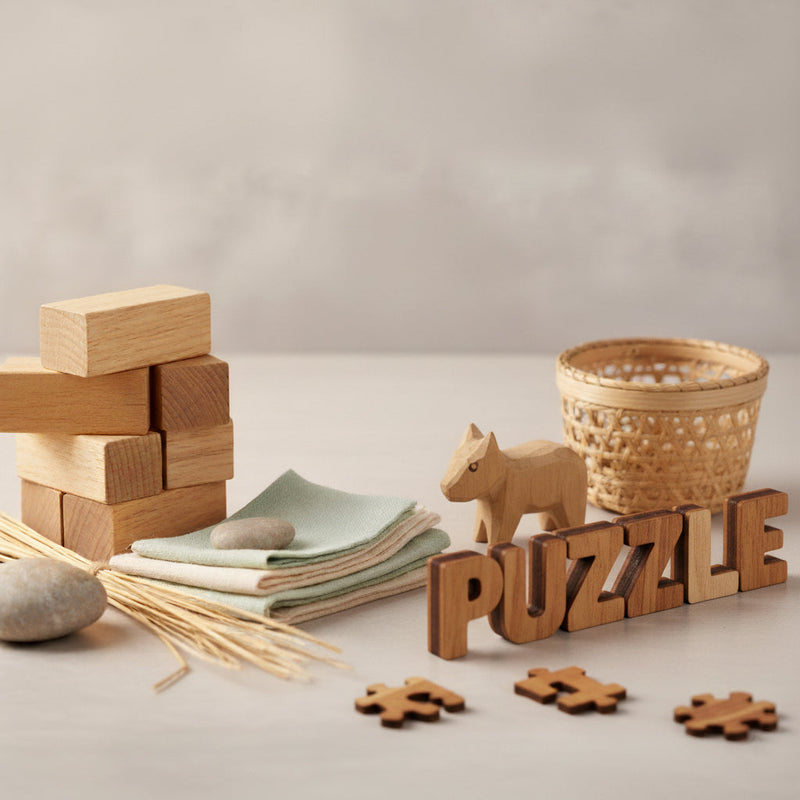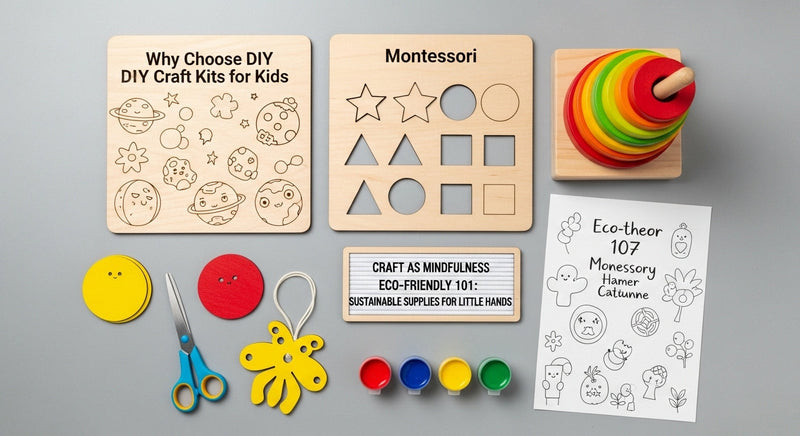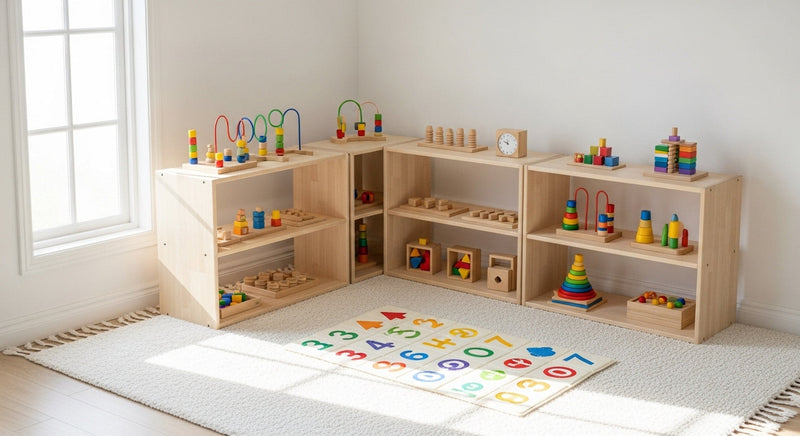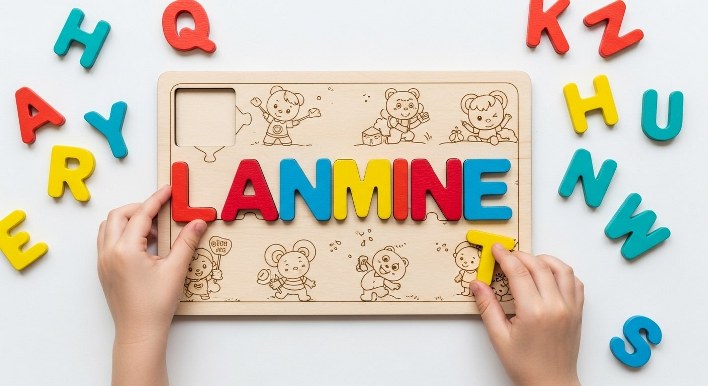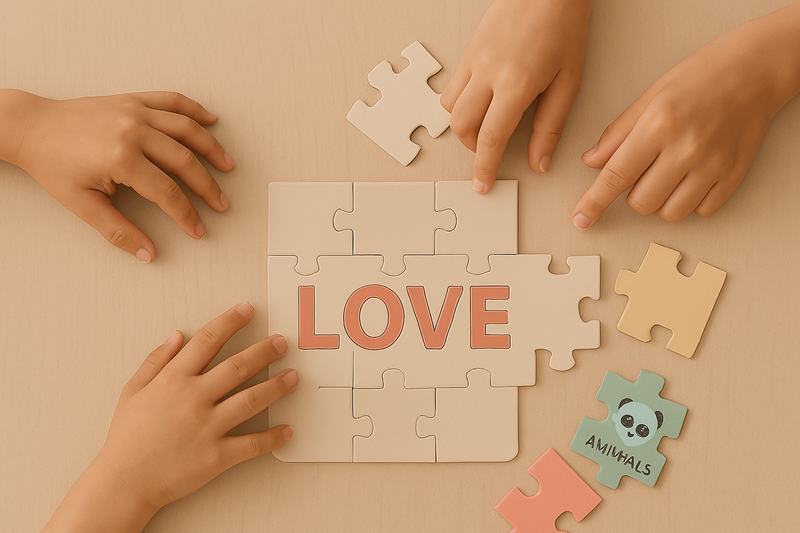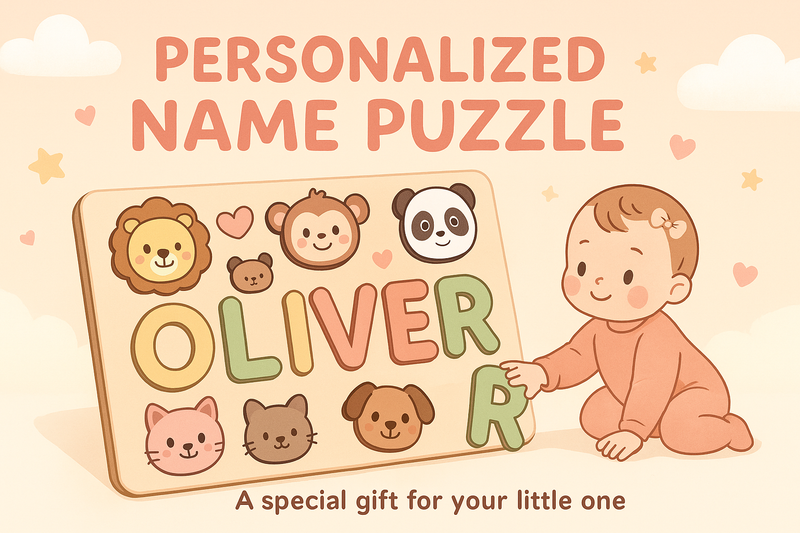Sustainable toysrepresent more than just a passing trend – they're a fundamental shift toward responsible parenting that benefits both children and our planet. As parents become increasingly aware of environmental impact, the demand for eco-friendly alternatives to plastic toys has surged dramatically. These natural, durable playthings offer superior developmental benefits while teaching children valuable lessons about environmental stewardship from an early age.
The toy industry produces over 90% of its products from plastic, contributing significantly to global waste. However, sustainable alternatives like wooden toys, organic cotton stuffed animals, and bamboo building blocks provide safe, non-toxic options that last for generations. When you choose sustainable toysfor your children, you're investing in their health, development, and future while reducing your family' s environmental footprint.
Why Sustainable Toys Matter for Modern Families
Modern families face unprecedented challenges when selecting appropriate toys for their children. The overwhelming majority of conventional toys contain harmful chemicals, break easily, and end up in landfills within months of purchase. Sustainable toysaddress these concerns by using natural materials, non-toxic finishes, and time-tested construction methods that ensure longevity.
Research shows that children who play with natural materials develop stronger sensory processing skills and demonstrate increased creativity compared to those who primarily use electronic or plastic toys. The texture, weight, and natural variations in wooden toys stimulate multiple senses simultaneously, promoting healthy brain development during crucial early years.
Environmental Impact of Traditional vs Sustainable Toys
The environmental cost of conventional toy production is staggering. Most plastic toys are manufactured overseas using petroleum-based materials, requiring significant energy for production and transportation. These toys often contain phthalates, BPA, and other chemicals that can leach into soil and water systems when discarded.
Sustainable toys, particularly those made from responsibly sourced wood, offer a dramatically different environmental profile. FSC-certified wooden toys come from forests managed according to strict environmental and social standards. These toys biodegrade naturally at the end of their useful life, which is typically measured in decades rather than months.
The carbon footprint comparison is equally compelling. While plastic toys require energy-intensive manufacturing processes and long-distance shipping, many sustainable toy companies source materials locally and use traditional crafting methods that consume minimal energy.
Health Benefits of Natural Materials in Children's Toys
Children's developing immune systems are particularly vulnerable to chemical exposure from conventional toys. Many plastic toys contain volatile organic compounds (VOCs) that can cause respiratory irritation, skin sensitivity, and potential long-term health effects. Sustainable toys made from natural materials eliminate these concerns entirely.
Wooden toys naturally possess antimicrobial properties, making them inherently safer for children who frequently put toys in their mouths. The natural oils in hardwoods like maple and beech provide protection against bacteria and mold without requiring chemical treatments.
Additionally, the tactile experience of natural materials supports healthy sensory development. The varied textures, temperatures, and weights of wooden toys provide rich sensory input that plastic alternatives cannot match. This sensory stimulation is crucial for developing fine motor skills, spatial awareness, and cognitive function.
Montessori Philosophy and Natural Materials
The Montessori educational approach strongly emphasizes the use of natural materials in children's learning environments. Dr. Maria Montessori observed that children naturally gravitate toward real, authentic materials rather than synthetic alternatives. This preference stems from an innate human connection to nature that supports optimal learning and development.
Montessori classrooms worldwide feature wooden toys and learning materials almost exclusively. These materials allow children to experience authentic cause-and-effect relationships, develop practical life skills, and build confidence through meaningful interaction with their environment.
The beauty and simplicity of natural materials also support concentration and focus. Unlike brightly colored plastic toys designed to overstimulate, wooden toys in natural finishes create calm, peaceful play environments that encourage deep, sustained engagement.
Choosing the Right Sustainable Toys for Different Ages
Selecting age-appropriate sustainable toys requires understanding both developmental needs and safety considerations. Each age group benefits from specific types of natural materials and construction methods that support their current stage of growth.
Infants (0-12 months)
Babies need toys that are safe to mouth, easy to grasp, and provide sensory stimulation. Wooden teething rings made from untreated hardwood offer the perfect combination of safety and developmental support. The natural hardness helps soothe sore gums while the wood's natural antimicrobial properties keep the toy hygienic.
Organic cotton rattles filled with natural materials like rice or wooden beads provide auditory stimulation without overwhelming sensitive hearing. These soft toys can be safely machine washed and don't contain the small parts or electronic components that pose choking hazards.
Toddlers (1-3 years)
Toddlers benefit enormously from open-ended toys that support their developing imagination and motor skills. Wooden blocks, simple puzzles, and stacking toys provide endless possibilities for creative play while building essential cognitive skills.
Name puzzles, like those crafted by Wooden Toys Point, offer personalized learning experiences that help toddlers recognize letters while developing fine motor skills. These handcrafted toys become treasured keepsakes that families often pass down through generations.
Push-and-pull toys made from solid wood encourage gross motor development and provide the stability toddlers need as they perfect their walking skills. The substantial weight of wooden toys provides better feedback than lightweight plastic alternatives, helping children understand cause and effect.
Preschoolers (3-5 years)
Preschoolers are ready for more complex toys that challenge their problem-solving abilities and support dramatic play. Wooden dollhouses, train sets, and construction toys provide frameworks for storytelling and role-playing that develop social and emotional skills.
Art supplies made from natural materials, such as beeswax crayons and wooden paintbrushes, introduce children to creative expression while maintaining non-toxic safety standards. These materials often produce more vibrant, satisfying results than synthetic alternatives.
Building sets made from sustainably harvested wood challenge spatial reasoning skills and provide hours of engaged play. Unlike plastic building toys with predetermined outcomes, wooden blocks and construction sets offer unlimited creative possibilities.
The Economics of Sustainable Toy Investment
While sustainable toys often carry higher upfront costs than mass-produced plastic alternatives, they represent superior long-term value for families. Quality wooden toys frequently outlast their plastic counterparts by decades, making them cost-effective investments that can serve multiple children and even generations.
Cost Per Use Analysis
10-Year Cost Comparison
| Toy Type | Initial Cost | Replacements Needed | Total 10-Year Cost |
|---|---|---|---|
| Quality Wooden Toy | $150 | 0 | $150 |
| Plastic Alternative | $30 | 8-12 | $270-$390 |
* Calculation based on average toy lifespan and replacement frequency data
Over a 10-year period, families often spend more replacing broken plastic toys than they would investing in durable wooden alternatives from the beginning. The wooden toys also retain resale value, often selling for 50-70% of their original price when no longer needed.
Many sustainable toy companies offer repair services for their products, extending their useful life even further. This commitment to product longevity reflects the manufacturer's confidence in their construction quality and environmental responsibility.
Hidden Costs of Cheap Toys
The true cost of inexpensive plastic toys extends beyond their purchase price. Frequent replacements due to breakage create ongoing expenses that quickly exceed the cost of higher-quality alternatives. Additionally, the time and frustration associated with constantly replacing broken toys represents a hidden cost that many families overlook.
Cheap toys often lack the developmental benefits that justify their purchase in the first place. Toys that break easily or fail to engage children's interest provide minimal educational value, essentially wasting the money spent on them.
Building a Sustainable Toy Collection
Creating a thoughtful, sustainable toy collection requires planning and patience. Rather than accumulating numerous toys quickly, focus on acquiring fewer, higher-quality pieces that will provide lasting value and enjoyment.
Start with versatile, open-ended toys that can adapt to your child's changing interests and developmental needs. Wooden blocks, for example, serve as building materials for toddlers, architectural challenges for preschoolers, and mathematical manipulatives for school-age children.
Quality Over Quantity Approach
Children benefit more from a small collection of well-made toys than a large assortment of mediocre ones. Too many toy choices can overwhelm children and actually reduce their engagement with any single item. A curated collection of sustainable toys encourages deeper, more meaningful play experiences.
Pro Tip: Toy Rotation System
- Store some toys out of sight
- Rotate toys into play every 2-3 weeks
- Keep toys feeling fresh and exciting
- Prevent overwhelming clutter
Consider the multi-generational potential of each toy purchase. Toys that can be passed down to younger siblings or future children multiply their value exponentially. Wooden Toys Point's personalized name puzzles, for instance, become family heirlooms that connect children to their heritage while providing educational benefits.
Caring for Sustainable Toys to Maximize Lifespan
Proper care ensures that sustainable toys maintain their beauty and functionality for decades. Natural materials require different maintenance approaches than synthetic alternatives, but the care routines are generally simple and straightforward.
Wooden Toy Maintenance
Essential Care Steps:
- Cleaning:Use mild soap and water, avoid harsh chemicals
- Drying:Allow complete air drying before storage
- Treatment:Apply food-grade mineral oil occasionally
- Storage:Keep in dry locations away from direct sunlight
- Inspection:Check regularly for splinters or loose parts
Store wooden toys in dry locations away from direct sunlight, which can cause fading and cracking over time. Avoid storing wooden toys in plastic bags, which can trap moisture and promote mold growth.
Teaching Children Toy Care
Involving children in toy care teaches responsibility and respect for their belongings. Young children can help with simple cleaning tasks, while older children can learn basic maintenance skills like tightening screws or applying protective oils.
This involvement helps children understand the value of their toys and develops a mindset of stewardship rather than disposability. Children who learn to care for their belongings often become more conscious consumers as adults.
Making the Transition to Sustainable Play
Families don't need to replace their entire toy collection overnight. A gradual transition allows for thoughtful decision-making and helps children adjust to different types of play experiences.
Begin by identifying toys that are broken, outgrown, or no longer used. Replace these items with sustainable alternatives as needs arise. This approach spreads the financial investment over time while immediately improving the quality of your child's play environment.
Involving Children in the Process
Age-appropriate children can participate in selecting new sustainable toys. Explain the benefits of natural materials and help them understand how their choices impact the environment. This education builds environmental consciousness while making children feel invested in their new toys.
Consider visiting local craftspeople or toy stores that specialize in sustainable products. These experiences help children understand the human effort and skill involved in creating quality toys, fostering appreciation for craftsmanship and fair labor practices.
The Future of Sustainable Play
The sustainable toy movement continues gaining momentum as parents prioritize environmental responsibility and child development. Innovative companies are developing new eco-friendly materials and production methods that make sustainable toys more accessible and affordable.
Advances in sustainable packaging, carbon-neutral shipping, and local production networks are reducing the environmental impact of toy distribution. These improvements make it easier for environmentally conscious families to access high-quality sustainable toys regardless of their location.
Supporting Sustainable Toy Companies
Choose to support companies that demonstrate genuine commitment to sustainability through their materials, production methods, and business practices. Look for certifications like FSC for wood products, GOTS for organic textiles, and B-Corp certification for overall environmental and social responsibility.
Companies like Wooden Toys Pointthat focus on handcrafted, personalized products often provide superior quality and customer service compared to mass-market alternatives. These relationships create added value through customization options and ongoing support.
Creating Lasting Memories with Meaningful Toys
Sustainable toys often become central elements in children's favorite memories and family traditions. The durability and timeless appeal of well-made wooden toys help them transcend generations, creating connections between family members separated by decades.
Children often develop stronger emotional attachments to toys that engage their senses and imagination over extended periods. These meaningful relationships with objects teach children to value quality, craftsmanship, and the stories that objects can carry through time.
Start Your Sustainable Toy Journey Today
Invest in your family's future with thoughtfully crafted, environmentally responsible toys that will enrich your children' s lives for years to come.
Whether it's a personalized name puzzle that grows with your child or a set of wooden blocks that will inspire countless building adventures, each sustainable toy choice moves your family toward a more thoughtful, environmentally conscious future.
